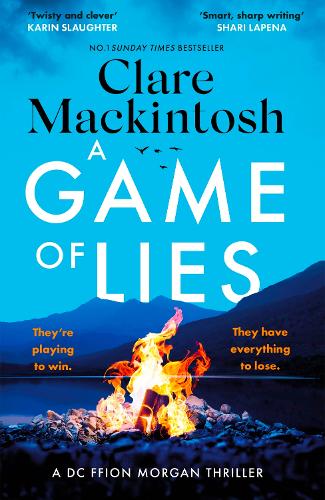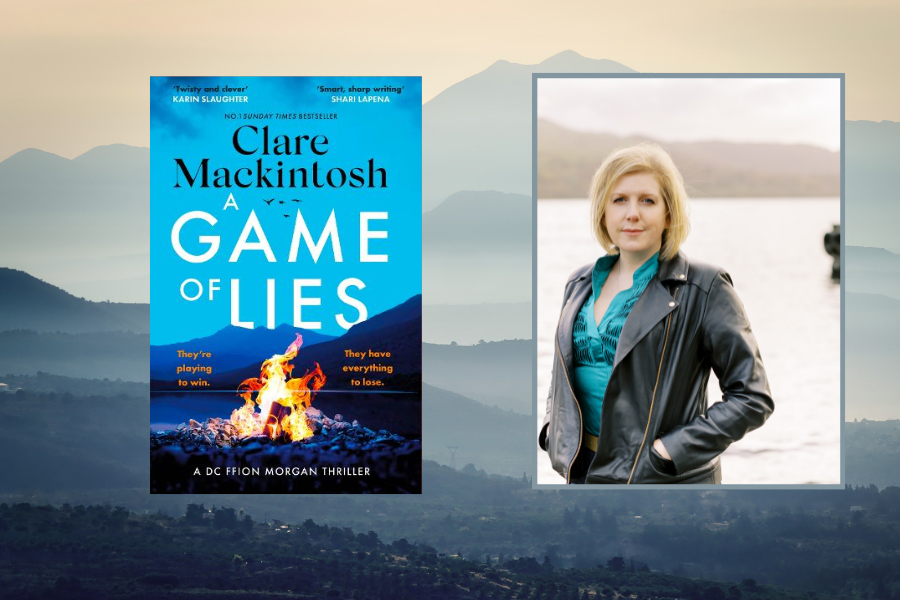Clare Mackintosh is uniquely placed to offer advice on writing crime fiction. Not only is she an internationally bestselling and award-winning author, with her books translated into 40 languages, but she used to be a police officer. This inside perspective is just one of the things that makes Clare’s thrillers so gripping.
With the publication of her latest novel, A Game of Lies, we invited Clare to dispense some invaluable writing tips on how to nail the crime fiction genre. Here’s Clare’s ten essential ingredients for writing the best crime fiction:
Clare Mackintosh:
Whenever I hear someone refer to a crime novel as an ‘easy read’, I always give a wry smile, because these ‘unputdownable’ page-turners are anything but easy to write. Here are ten essential ingredients for a stand-out thriller:
1. A hook
The hook is your way into the novel – a one or two line pitch that makes a reader want to buy the book. You can find examples of these in the summaries listed in the Sunday Times bestseller charts.
2. A crime
Obvious, right? But criminality is a broad church (I speak as a former detective) so let your imagination run riot. The Crown Prosecution Website gives an A-Z of every offence in the UK (including my favourite: Wanton and Furious Driving).
3. A victim
The best of today’s crime novels have moved on from the trope of beautiful dead girls. Women still feature strongly (this is perhaps not surprising, given that female readers account for 80 per cent of the market) but contemporary victims are true-to-life and – above all – relatable.
4. A villain
For your ‘baddie’ to be more than a stereotypical moustache-twirling characture, it’s essential to give them their own moral code. Sure, we know that systematically murdering Volvo-drivers is wrong, but if your villain’s convinced it’s right, we’ll follow along for the ride.
5. A hero
Whatever your villain desires, your hero must strive for the opposite. It’s this conflict that will drive the action and keep the reader turning the page. A crime fiction hero is often a detective, but they don’t have to be; they could be an amateur sleuth, or simply a civilian with a vested interest.
6. Red herrings
Leading the reader down blind alleys is my favourite part of writing crime fiction. Some writers weave these in as they write; others finish a first draft then go back and seed in their false leads. I plot mine in advance, letting the reader run with each idea for a while before blowing up their theories.
7. Twists and reveals
A reveal is the answer to a question the reader is encouraged to pose (eg; who murdered that man?) A twist is the answer to a question the reader never even thought to ask (eg; the narrator presenting as one person is actually another). Not every crime novel needs a twist, but every crime novel needs plenty of surprising reveals.
8. Tension
Increase tension in your crime novel by stripping out unnecessary back-story and focusing on driving the action forward. Introduce a ‘ticking clock’ (a countdown to something big happening), or raise the stakes so we care more about what your victim stands to lose.
9. Atmosphere
An evocative setting immediately creates atmosphere, but the most mundane of locations can fire up the reader’s imagination. Make use of all five senses, and view every place through the narrator’s eyes. Their personal values, experiences and current emotions will all add nuance.
10. A satisfying ending
An oft-cited reason for the popularity of crime fiction is that readers seek the comfort of a resolution, in a world where problems are frequently left unsolved. That’s not to say you can’t have a final twist in the tale (I love a gasp-inducing ending) but in general terms, the baddie should get their comeuppance.
We certainly hope you’re running to your keyboard to implement these ten delicious ingredients. Make sure you check out Clare’s latest novel, A Game of Lies to see these ingredients at work!









